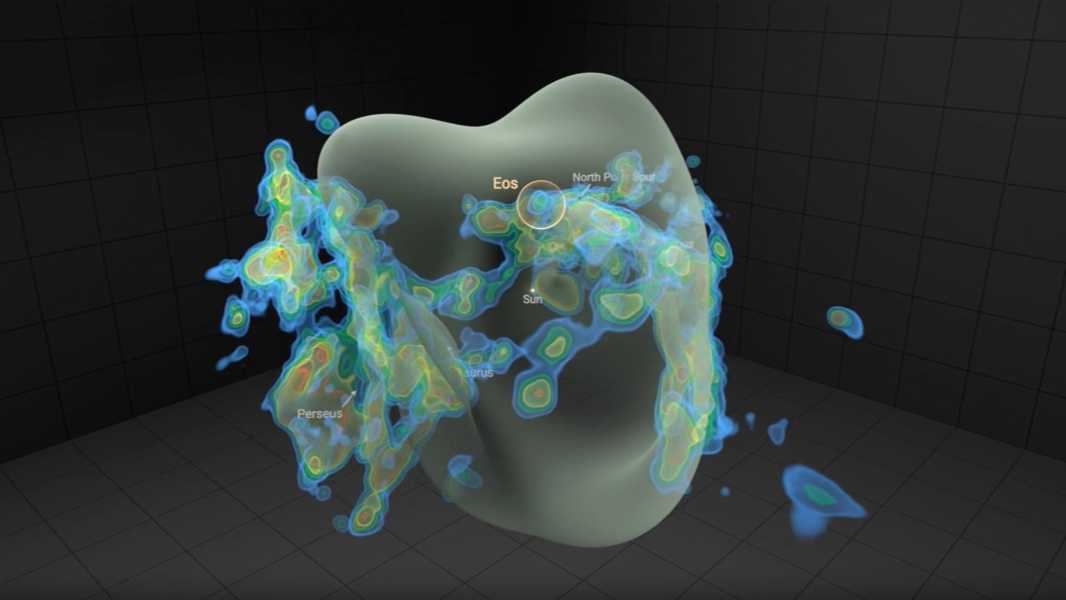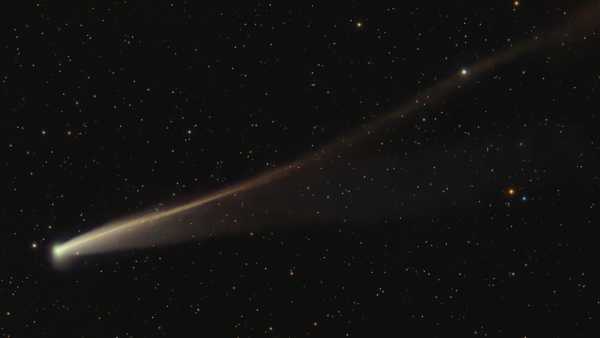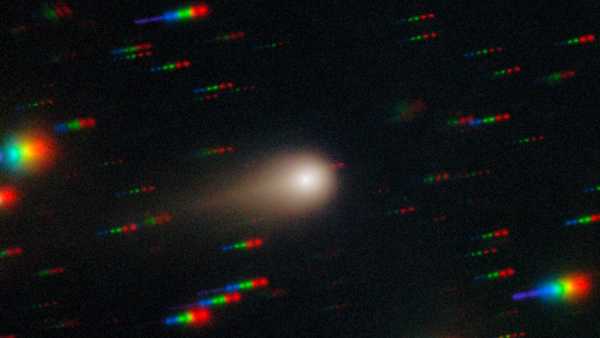
The Eos molecular cloud is one of the most impressive structures in the sky on our planet. (Photo credit: Thomas Muller (HdA/MPIA) and Tavisha Dharmawardena (NYU))
Astronomers have discovered the closest known molecular cloud to Earth, giving them a unique opportunity to probe in detail the cosmic recycling cycle that powers the formation of new stars and planets.
Named Eos after the Greek goddess of dawn, the newly discovered cloud is a giant crescent-shaped blob of hydrogen gas located just 300 light-years from Earth. About 100 light-years wide, it covers an area equivalent to about 40 Earth moons lined up side by side, making it one of the largest structures in the sky.
“It's really huge, and it's been undetected all this time,” Blakeslee Burkhart, an associate professor of physics and astronomy at Rutgers University in New Jersey who led the study, told Live Science.
Despite its colossal size and relative proximity to Earth, Eos has remained undetected due to its low levels of carbon monoxide (CO)—a bright and easily detectable chemical tracer that astronomers typically rely on to identify molecular clouds.
Instead, the scientists identified Eos through the fluorescent glow of the hydrogen molecules inside it — a new approach that could help uncover many similar hidden clouds in the galaxy. “There are certainly many more dark CO clouds waiting to be discovered,” Burkhart said.
Molecular hydrogen is the most abundant substance in the universe. By studying hydrogen-filled clouds like Eos, astronomers have been able to identify previously unknown reserves of hydrogen, allowing them to more accurately estimate the amount of material available to form stars and planets in the universe.
The researchers published their findings in a paper published April 28 in the journal Nature Astronomy.
“This cloud literally glows in the dark”
Burkhart discovered Eos while analyzing 20 years of data from the spectrograph on the Korea Science and Technology Satellite-1, which was launched into Earth orbit in 2003 to map the distribution of hot gas in the Milky Way.
Just as a prism breaks up visible light, a spectrograph on board the satellite separated far-ultraviolet light into a spectrum of wavelengths. This allowed scientists to identify emissions from different molecules. In what appeared to be a blank patch of sky, cataloging hydrogen molecule data revealed that Eos was “literally glowing in the dark,” Burkhart said in a Rutgers statement.
“It was incredibly serendipitous,” she told Live Science. “I was looking at this data and I saw this structure. I was like, 'Hmm, I don't know what that is. This is unique.'”
Sourse: www.livescience.com





